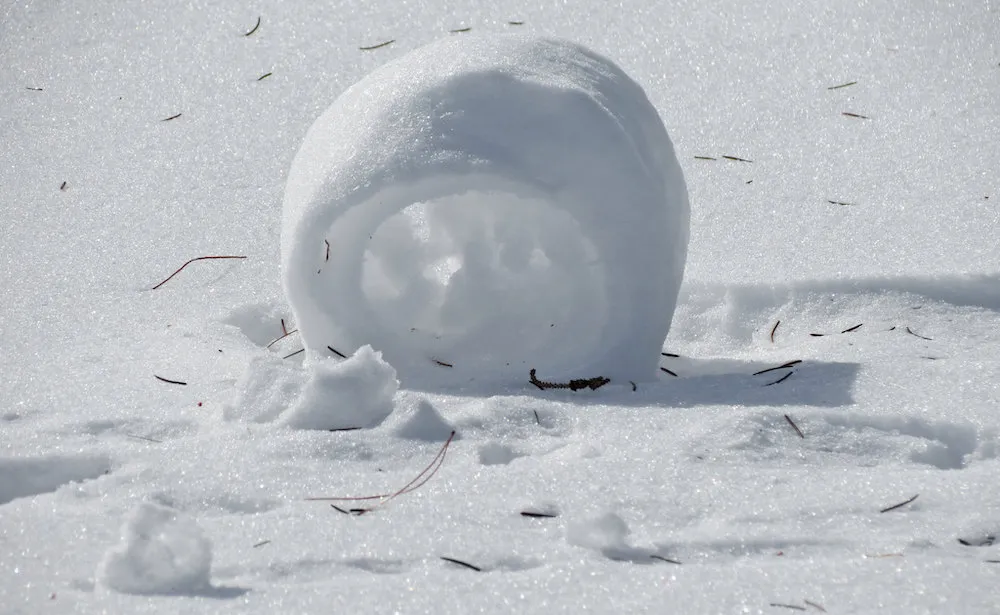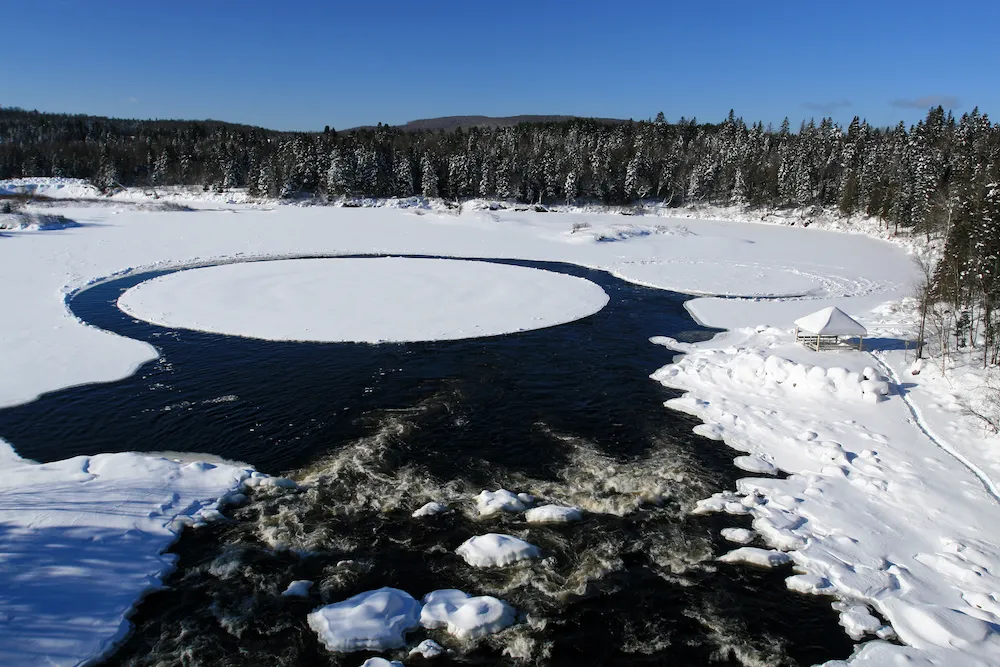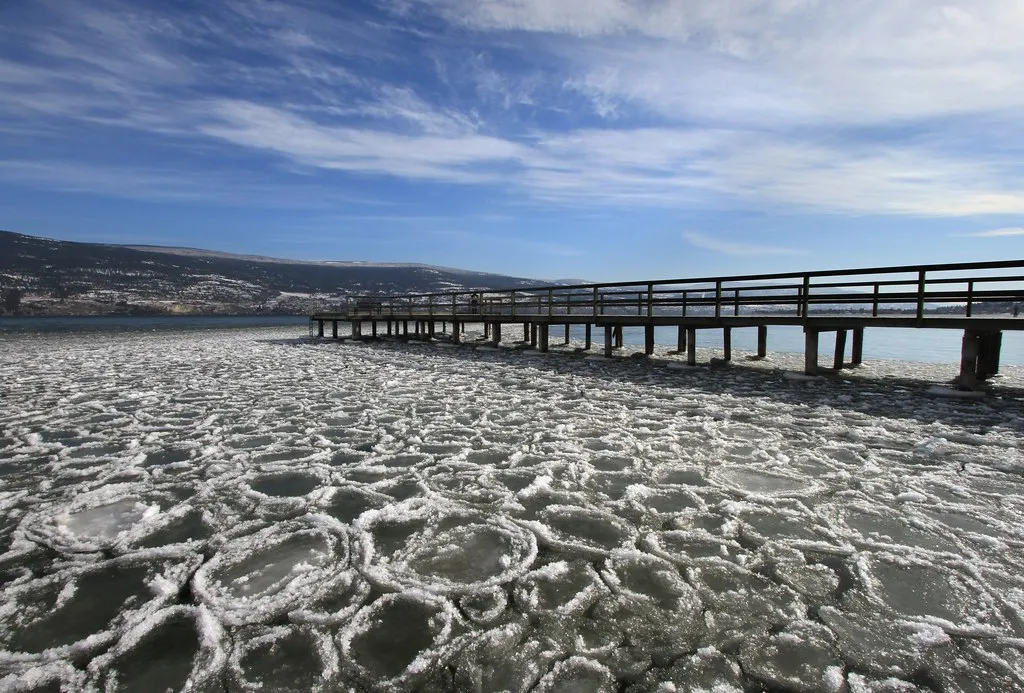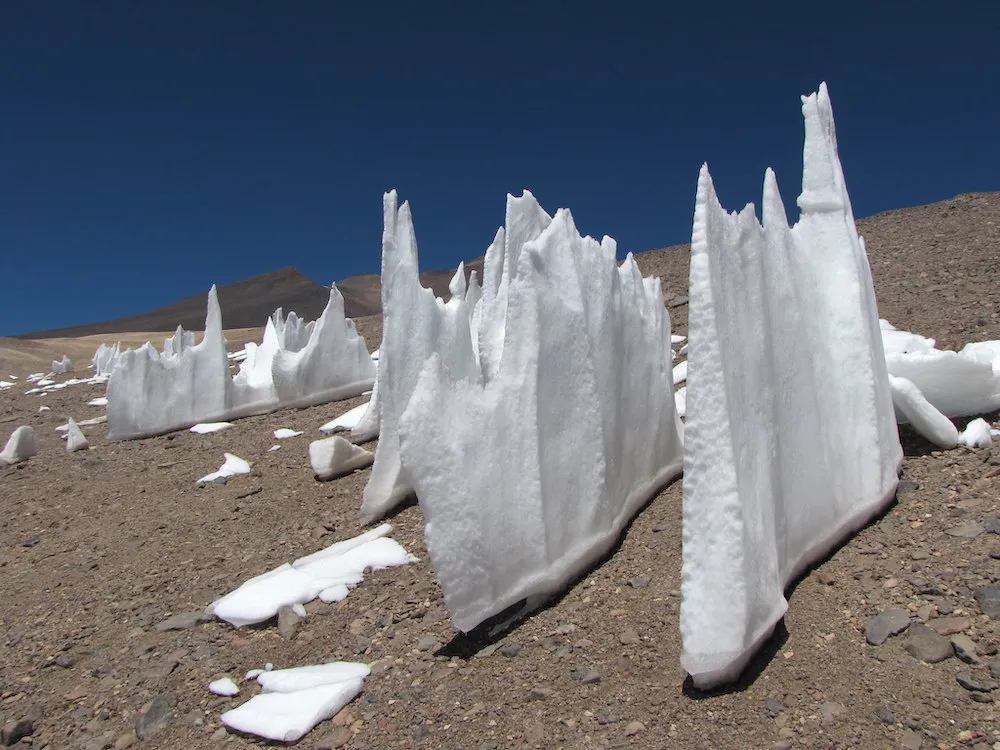The Science Behind Snow Rollers, Ice Circles and Other Winter Phenomena
A meteorologist explains how bizarre snow and ice formations take shape—and where you’re most likely to see them
/https://tf-cmsv2-smithsonianmag-media.s3.amazonaws.com/filer/ec/bd/ecbdfc60-d9fa-4721-8557-4c126f375479/westbrook_maine_ice_circle-resize.jpg)
Last year at this time, Westbrook, Maine, made headlines when a 100-yard-wide ice circle appeared on the surface of the Presumpscot River, drawing thousands of people to see the phenomenon for themselves. Its popularity on social media and its resemblance to the moon helped make it the poster child for ice circles, and even now, a year later, locals wait with anticipation in hopes that it will form again.
So what exactly causes ice circles and other obscure snow and ice formations like snow rollers and ice pancakes to appear each winter? We talked to Brian Jackson, a meteorologist with the National Oceanic and Atmospheric Administration (NOAA), who has dedicated his career to the study of snow and ice. (Before his current role, he spent a decade at the U.S. National Ice Center, a multi-agency ice analysis center operated by NOAA, the U.S. Navy and the U.S. Coast Guard). Jackson helped us unpack the causes of these formations and where you're most likely to see them.
Snow Rollers

Similar in appearance to what it looks like when you drag an ice cream scoop through a carton of the good stuff, snow rollers occur in open prairies or hilly areas free of obtrusions (think boulders and trees). They are the combination of two different layers of snow, the first being an existing sheet that has crusted over and the second a fresh layer of fallen snow. “It’s kind of like snow falling on top of an ice rink, which doesn’t quite stick to what’s below it,” Jackson says. “Then some sort of perturbation happens, such as snow falling off of a tree or the wind itself begins blowing some of the snow, which is sticky enough that as it moves it grabs on to what it’s touching.” As the formation moves, it continues growing, especially if it’s windy and there’s enough gravity to keep it rolling down a hill. However, Jackson warns that conditions need to be practically perfect for snow rollers to form. “It can’t be too windy or else it will blow apart,” he says. “Typically 30 miles per hour is the sweet spot depending on how deep and aggressive the snow is.”
Where to see snow rollers right now: This month, a number of snow rollers have been spotted resting on top of frozen Lake Vermilion in Greater Sudbury, Ontario, Canada. In the past, these large snowballs have formed throughout Rocky Mountain National Park in Colorado; Ottawa, Canada; and other points north.
Ice Circles

Often spotted on lakes, ponds, rivers and other slow-moving bodies of water, ice circles look like frost-coated lily pads floating on the water’s surface. In actuality, ice circles occur when moving water forces ice to slowly rotate. “What’s happening here is shear—when on one side of the ice you have water that’s moving faster than on the other side causing the ice to rotate,” Jackson says. “The result is an eddy current, like a whirlpool.” The meteorologist explains that there are two ways for ice circles to form. The first happens when there’s ice in a stationary area but a change in water speed due to a topographic force, such as a bend in a river, causes the ice to rotate until it forms the shape of a circle. The other instance occurs when a hunk of ice breaks off of an ice sheet that’s located in a rotation zone. “The water surrounding it will cause it to rotate, naturally forming into a circle as any pointy edges start to grind down as they brush against the surrounding ice,” he says.
Where to see ice circles: While the Westbrook circle stands out for its magnificence, most ice circles are only a fraction of its size and crop up on the surface of lakes, ponds and rivers in areas known for reaching frigid temperatures in the winter, such as Canada, the northern United States and Scandinavia.
Pancake Ice

Just like ice circles, pancake ice forms on the surface of bodies of water, including lakes, oceans and seas. But what sets the two phenomena apart is how they form. Pancake ice occurs when ice is still newly formed, making it easily malleable. “When ice is young, it’s more willing to be formed [into different shapes],” Jackson says. “As it grows thicker, it tends to crack and crumble more.” In order for pancake ice to develop, an outside force, such as the water current or the wind, must move the floes so that they bump into each other causing them to conglomerate into larger formations. The result is “you get this area on the outside that mashes upward causing a thick band on the outside and a flat pan in the middle, giving it a circular or pancake-like shape.” The size of pancake ice can vary, with some spanning up to 13 feet in diameter.
Where to see pancake ice: Pancake ice has been making the news regularly this winter in locations around the world, including the Scottish Highlands and along the shores of Lake Ontario in Webster, New York.
Penitentes

Penitentes, or nieves penitentes, are spikes of hardened snow or ice that form in arid environments, such as the high deserts found in the Andes in South America. (The name comes from the spikes' resemblance to worshippers kneeling in penance for their sins.) Penitentes can vary in size, but in some cases they can reach heights of approximately 13 feet. So how do they form? Jackson says that penitentes “happen when the snow or ice sublimates, going directly from being a solid to a gas since there is little to no water vapor in the air.” As the sun causes evaporation to occur, the result is the development of depressions, leaving behind a spikey forest of snowy formations “that look like pinnacles.”
Where to see penitentes: One of the best spots to see these craggy structures are the Chilean Andes, however they've also been known to rise up on Mount Rainier in Washington (and even far, far away from Earth on the surface of Europa, one of Jupiter's moons).